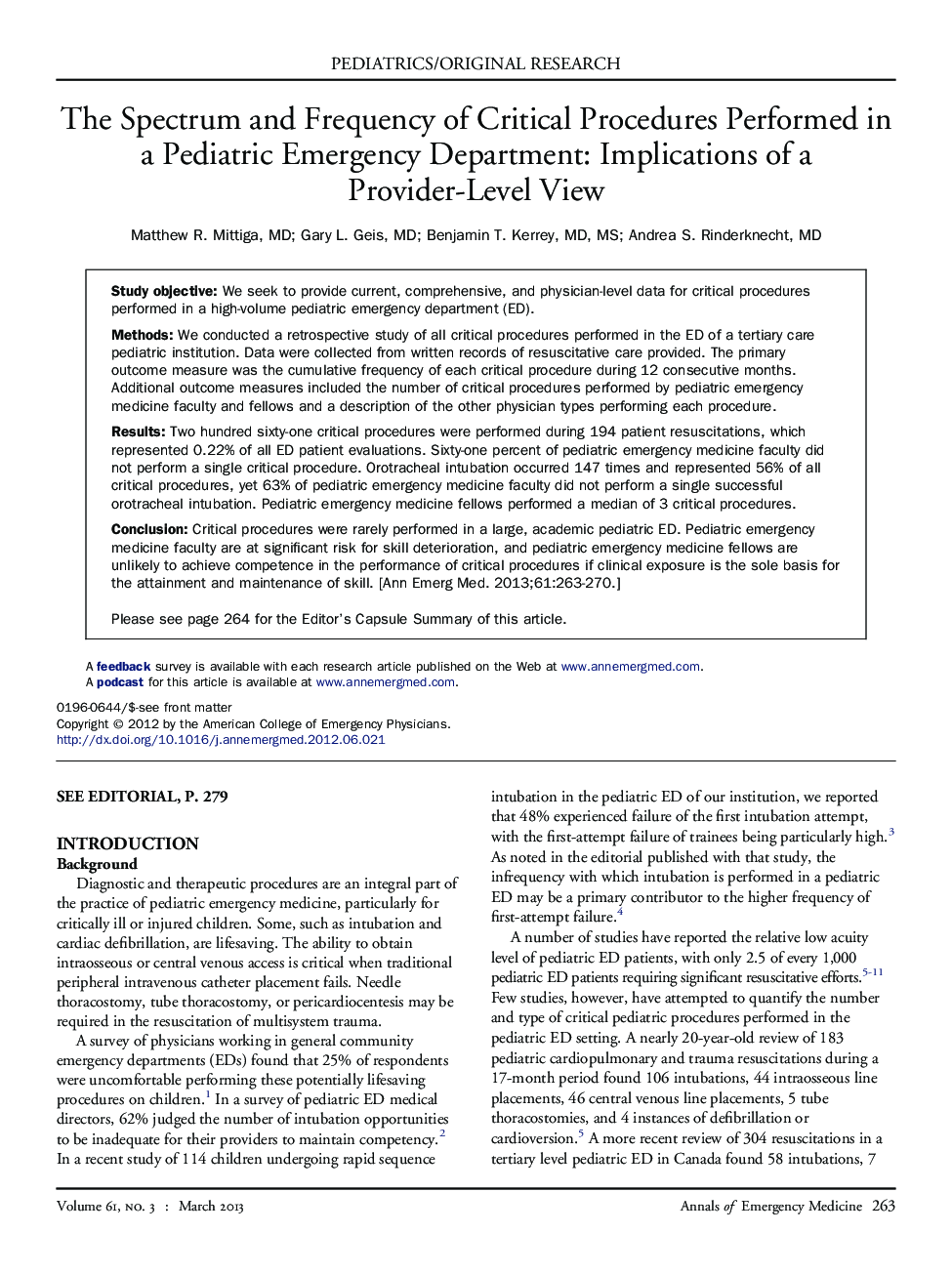| Article ID | Journal | Published Year | Pages | File Type |
|---|---|---|---|---|
| 3230454 | Annals of Emergency Medicine | 2013 | 8 Pages |
Study objectiveWe seek to provide current, comprehensive, and physician-level data for critical procedures performed in a high-volume pediatric emergency department (ED).MethodsWe conducted a retrospective study of all critical procedures performed in the ED of a tertiary care pediatric institution. Data were collected from written records of resuscitative care provided. The primary outcome measure was the cumulative frequency of each critical procedure during 12 consecutive months. Additional outcome measures included the number of critical procedures performed by pediatric emergency medicine faculty and fellows and a description of the other physician types performing each procedure.ResultsTwo hundred sixty-one critical procedures were performed during 194 patient resuscitations, which represented 0.22% of all ED patient evaluations. Sixty-one percent of pediatric emergency medicine faculty did not perform a single critical procedure. Orotracheal intubation occurred 147 times and represented 56% of all critical procedures, yet 63% of pediatric emergency medicine faculty did not perform a single successful orotracheal intubation. Pediatric emergency medicine fellows performed a median of 3 critical procedures.ConclusionCritical procedures were rarely performed in a large, academic pediatric ED. Pediatric emergency medicine faculty are at significant risk for skill deterioration, and pediatric emergency medicine fellows are unlikely to achieve competence in the performance of critical procedures if clinical exposure is the sole basis for the attainment and maintenance of skill.
